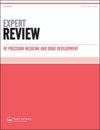数字生物标志物在精准医学中的价值:对癌症、自身免疫性疾病和COVID-19的影响
IF 1.2
Q4 PHARMACOLOGY & PHARMACY
Expert Review of Precision Medicine and Drug Development
Pub Date : 2021-05-13
DOI:10.1080/23808993.2021.1924055
引用次数: 3
摘要
根据患者的特点,精准医学(PM)旨在以最小的毒性风险优化最合适药物的给药时间。由于不同的病程和患者的治疗反应,这是一个多方面的问题。一般因素,如遗传学、表观遗传学、环境、种族、依从性、生活方式和饮食,决定了这些结果。在临床试验中,一些药物可能对特定的种族或合并症群体没有益处,甚至有害。在试验之外也观察到部分反应,因为最常用的药物在相对较少的患者中显示出高效率。因此,我们所说的“不精确医学”是PM的第一个挑战,因为临床实践的基本假设是,在人群水平上制定的疾病治疗和预防策略在应用于个人水平时预计是准确的。驱动患者概况变化的复杂性取决于从大量遗传、血清学、生化和诊断成像数据中获得的信息的异质性。这些代表了需要与生活方式和环境因素协调和整合的维度。第二个挑战是评估数据维度的益处,例如诊断改进、早期干预、提高药物效率和更有针对性的治疗。为了适应临床实践中患者的病因、临床症状和治疗反应的异质性,建议采用一种修订的临床方法。第一步是开发机器学习(ML)辅助的风险评估模型(参见,例如[2]),然后确定稳健的多模态数据驱动的预后指标(参见,例如[3],)。这两项工作需要新的策略来整合来自不同结构化和非结构化数据源(电子健康记录(EHRs)、管理数据库、生物成像档案、自量化测量等)的异构信息。大数据为基于人口的研究引入了一种新的范式,这种范式也带来了挑战。例如,这些研究的有效性是基于对所有病例的诊断准确性。一个关键的问题是用于执行验证的方法的可变性。目前,在验证大多数疾病分类算法方面存在挑战,这使得评估它们在人口研究中的潜力变得复杂。模型验证有助于更安全地解释模型所揭示的不同数据类型之间的相关性。以数据为中心的复杂疾病视角有助于将其定义为异质性过程,这些过程具有多方面的原因、演变过程、治疗方法以及观察到的患者对治疗反应的疾病轨迹(见[4-6]以及许多其他例子)。这些轨迹因患者而异,因此需要精确的方法。我们强调早期干预的必要性,当分子原因/模式仍然可以确定。早期治疗可能会大大降低疾病进展的风险,延长健康。因此,开发更具包容性的数字生物标志物(db)至关重要[7,8],这些数字生物标志物可能反映临床和分子数据的协同作用,以便在干预措施具有最佳成功机会的早期阶段识别疾病并预防未来的损害。DB值应与疾病过程中缩短轨迹长度的能力成正比,这将减少任何疾病触发和临床干预之间的时间窗口,然后发生不可逆转的损害。本文章由计算机程序翻译,如有差异,请以英文原文为准。
Value of digital biomarkers in precision medicine: implications in cancer, autoimmune diseases, and COVID-19
Based on the patient’s characteristics, precision medicine (PM) aims to optimize the time of administration of the most appropriate medicine with the minimum risk of toxicity. This is a multidimensional problem due to the varied disease course and therapeutic responses of patients. General factors, such as genetics, epigenetics, environment, ethnicity, adherence, lifestyle, and diet, determine these outcomes. In clinical trials, some drugs may be not beneficial or even harmful for a given ethnic or co-morbid group. Partial response is also observed outside trials, as the most commonly used drugs show high efficacy in relatively few patients. Therefore, what we call ‘imprecise medicine’ is the first challenge of PM due to the assumption underlying clinical practice that disease treatment and prevention strategies developed at the population level are expected to be accurate when applied at the individual level. The complexity that drives the variations in patient profiles depends on the heterogeneity of information obtained from large volumes of genetic, serological, biochemical, and diagnostic imaging data. These represent dimensions that need harmonization and integration with lifestyle and environmental factors. The second challenge is with assessing the benefits of the data dimensions, such as diagnostic improvements, earlier interventions, increased drug efficiency, and better-targeted treatments. To accommodate the heterogeneity of the etiologies, clinical symptoms, and treatment responses of patients in clinical practice, a revised clinical approach is recommended [1]. The first step is the development of a machine learning (ML)-assisted risk assessment model (see, for instance [2],) followed by the identification of the robust multimodal data-driven prognostic indicators (see, for instance [3],). These two efforts require new strategies for integrating heterogeneous information from different structured and unstructured data sources (electronic health records (EHRs), administrative databases, bioimaging archives, self-quantified measurements, etc.). Big Data has introduced a new paradigm for population-based studies that comes with challenges. For instance, the validity of such studies is based on the diagnostic accuracy used for all cases. A critical problem is the variability of the methods used to perform validations. Currently, there are challenges with validating most disease classification algorithms, and this complicates the assessment of their potential for population studies. Model validation facilitates safer interpretability of the correlations between diverse data types revealed by the models. Data-centric perspectives of complex diseases facilitate their definition as heterogeneous processes that have multifaceted causes, courses of evolution, treatments, and patient’s disease trajectories from the observed responses to treatment (see [4–6], among many other examples). These trajectories differ with each patient and, therefore, necessitate a precision approach. We emphasize the necessity of early intervention when molecular causes/patterns can still be identified. Early treatment is likely to lead to a substantial reduction in the risk of disease progression and prolonged health. Thus, it is critical to develop more inclusive digital biomarkers (DBs) [7,8] that may reflect the synergism of clinical and molecular data for identifying diseases at the early stages when interventions have optimal chances of success and future damage prevention. The DB values should be proportional to the ability to shorten the length of the trajectories during the disease course, which will reduce the temporal window of opportunity between any disease trigger and a clinical intervention before irreversible damage occurs.
求助全文
通过发布文献求助,成功后即可免费获取论文全文。
去求助
来源期刊

Expert Review of Precision Medicine and Drug Development
PHARMACOLOGY & PHARMACY-
CiteScore
2.30
自引率
0.00%
发文量
9
期刊介绍:
Expert Review of Precision Medicine and Drug Development publishes primarily review articles covering the development and clinical application of medicine to be used in a personalized therapy setting; in addition, the journal also publishes original research and commentary-style articles. In an era where medicine is recognizing that a one-size-fits-all approach is not always appropriate, it has become necessary to identify patients responsive to treatments and treat patient populations using a tailored approach. Areas covered include: Development and application of drugs targeted to specific genotypes and populations, as well as advanced diagnostic technologies and significant biomarkers that aid in this. Clinical trials and case studies within personalized therapy and drug development. Screening, prediction and prevention of disease, prediction of adverse events, treatment monitoring, effects of metabolomics and microbiomics on treatment. Secondary population research, genome-wide association studies, disease–gene association studies, personal genome technologies. Ethical and cost–benefit issues, the impact to healthcare and business infrastructure, and regulatory issues.
 求助内容:
求助内容: 应助结果提醒方式:
应助结果提醒方式:


